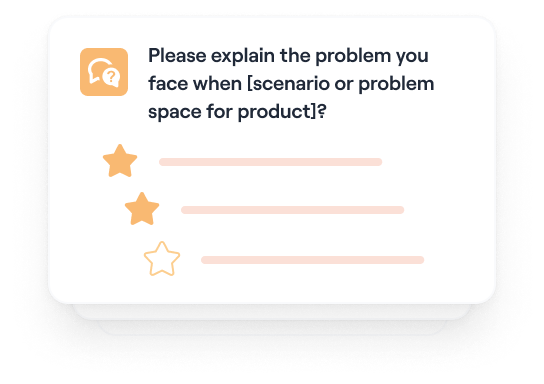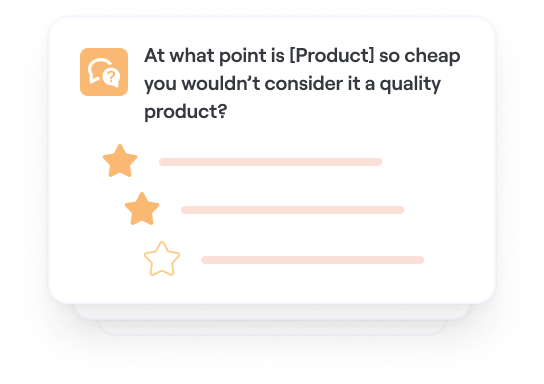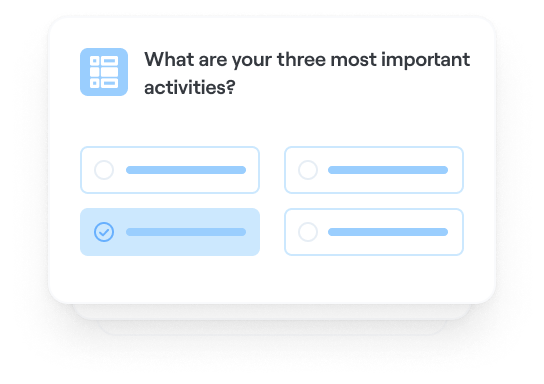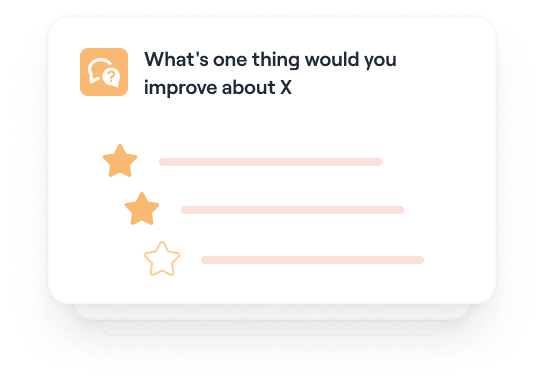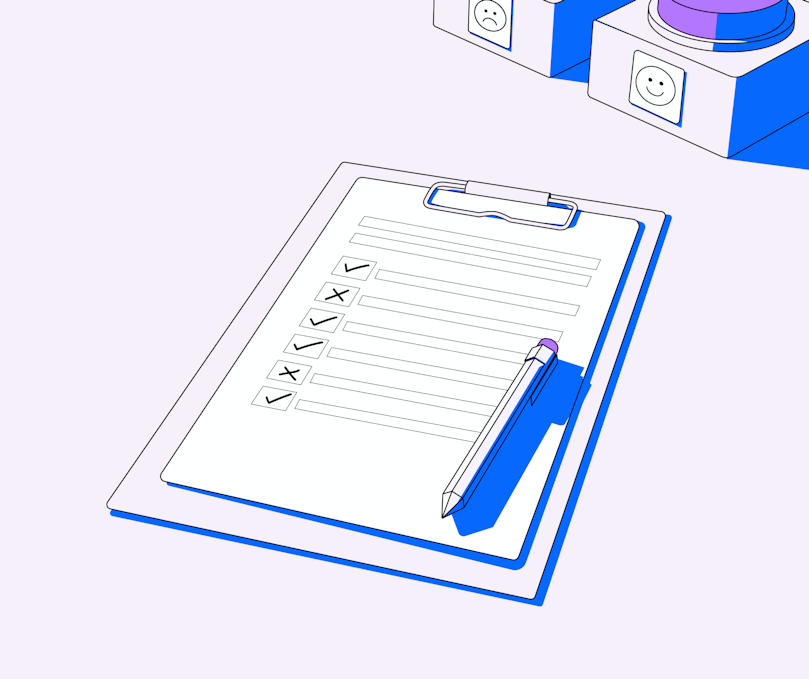
Design & Product
The product feedback guide: 4 steps to customer-centric products
Tap into the minds of your customers and discover their desired outcomes with this easy-to-use JTBD survey. Collect valuable, actionable feedback to help build more customer-centric products that helps users achieve their goals—and reduce their pain points.
Discover which jobs and goals your customers are most eager to meet, and help design better solutions based on responses.
Understand your users’ needs and emotions to help grow more fruitful, long-lasting relationships with them.
Explore top trends in user habits to pull together more powerful solutions to their problems.
Streamline your product vision and align with key stakeholders on which features to build next.
1
Log in to your Maze account (if you haven’t got one, don’t worry—it’s free to join).
2
Select this Jobs to Be Done template from the gallery.
3
Modify blocks and copy to your preference.
4
Do a pilot test with somebody in your organization (preferably, not on your team).
5
All good? Then it’s time to set it live and wait for the feedback to roll in!
What are some best practices for my Jobs-to-Be-Done research?
1. Create an action plan. Like most other forms of research, it helps to prepare a plan in advance. Make a list of what you expect your users’ current goals, motivations, frustrations, and problems to be so you can retroactively compare the real results with your assumptions.
2. Ask your users to create clear job statements. They should take the basic form of: action + object + context, but as long as they’re clear in intention and motivation, the insights are valuable. For example, “I want to have my groceries delivered to my home address while I’m working.”
3. Suss out the competition. Use your new intel to establish what solutions currently exist for your users—and where the gaps lie. Make a list of your main competitors and their products to help inspire core changes to your own.
4. Prioritize key jobs to be done. Your customers are all individuals with their own unique needs. However, if you’ve recruited participants from your target audience, you’ll likely find similarities across at least some of your results. Pick up on key trends in your feedback and create a hierarchy, from most important to least, to identify where your product can have the most impact.
When should I use this Jobs to Be Done template?
Our Jobs to Be Done template can help you uncover why people choose your product or service and how it helps them achieve their goals (or “jobs”). With it, you’ll collect key feedback that can be used to help shape your product—and create more demand for it. If you’re in any doubt about whether your customers’ goals have changed over time, it’s a good idea to check in with them using this template.
What is the Jobs-to-Be-Done framework?
The Jobs-to-Be-Done framework (also known as JBTD for short) is a respected approach to developing products based on an understanding your customer's specific goal (or “job”). It helps you tap into your customers’ minds to not only understand the job in question, but also the tools or products they would need to “hire”’ in order to help achieve it. In other words, it looks at what your customers are really trying to accomplish and explores their motivations for buying a product that will help.
What’s an example of a Job to Be Done statement?
Modern examples of Jobs-to-Be-Done mission statements can be found everywhere. You probably don’t want to ride in an Uber just for the sake of being in a car, but you do want to travel to a specific destination. You’re probably not overly excited about buying a new laundry detergent, but you do want to have clean clothes, and detergent is just the tool you need to get the job done.
Why is the Jobs to Be Done framework important to my research?
Simply put, it’s always a good idea to learn as much as possible about your customer’s needs and goals. With the Jobs to Be Done framework, you start to paint a bigger picture of the ‘why’ behind what your customers are looking to achieve, so you can break it down into actionable steps within your product. Once you understand what it is your customers want, you can create more user-centric products, gain a competitive advantage in the market, and segment new user groups to target.
PRO
Run a product discovery survey
Idea Validation • Product • Research
Run a product discovery survey
Discover their problems, offer your solutions
Gather pricing expectations
Marketing • Feedback Survey
Gather pricing expectations
Get a high-level overview of your users' expectations of pricing
Identify customer goals
Idea Validation • Product • Research
Identify customer goals
Help your customers achieve their goals
PRO
Run an early prototype test
Usability Testing • Wireframe Testing • Design
Run an early prototype test
Fail fast and improve faster with a quick prototype test
Req. Prototype
A-mazeing to meet you!
Welcome Screen
What do you need to plan for, or what decisions do you need to make before you begin [job to be done]?
Open Question
How many times in the last [time frame] did you look to [job to be done]?
Multiple Choice
How important is it for you to be able to [insert user job]?
Opinion Scale
What is your biggest challenge, frustration or problem with this [job]?
Open Question
What would enable you to accomplish this task more effectively?
Open Question
Successfully completing this task makes/saves the business [blank].
Multiple Choice
Thank You!
Thank You Screen
